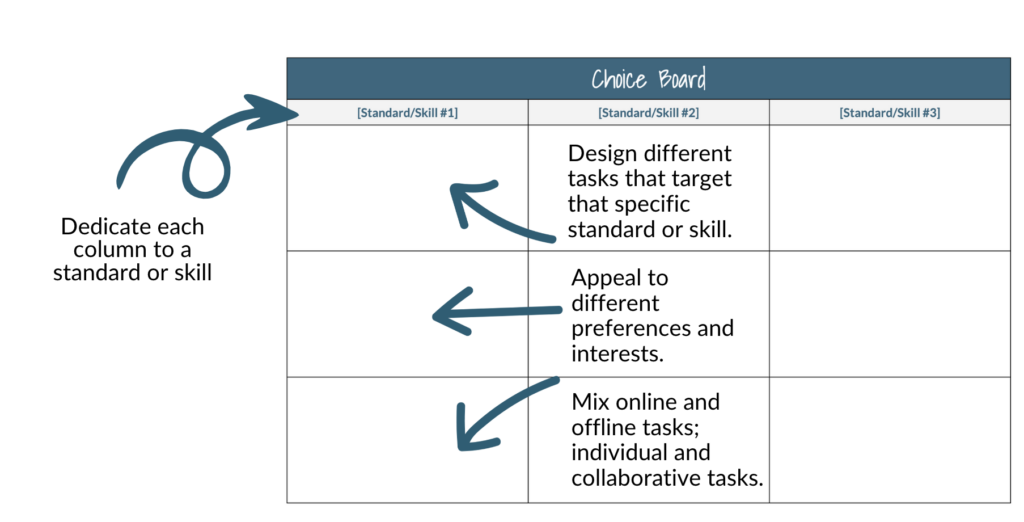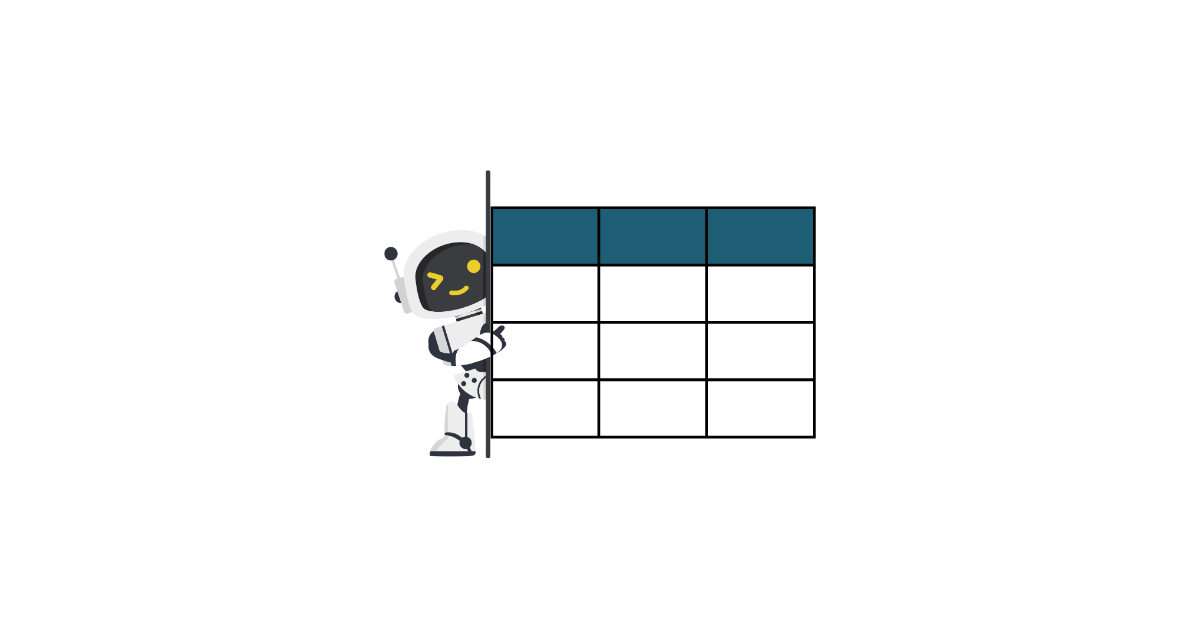Choice boards are a fantastic tool for honoring learner variability and providing students with meaningful choices. Not every student enjoys the same task, so giving them options is critical to maximizing their motivation and focus in a lesson. Choice boards allow us to honor our students’ preferences, needs, and interests, making their learning experience more engaging and effective.
By integrating choice boards, we put students in the driver’s seat, allowing them to control the pace and path of their learning experience. Simultaneously, choice boards free teachers to focus their time and attention on working with individual students or small-group instruction, providing more personalized support or challenge. This can lead to better learning outcomes for everyone.
Choice Board: Design Structures
Choice boards are not simply a collection of fun activities; they can be designed to serve several purposes. Below are some of my favorite choice board designs.
- Standards-aligned: These choice boards are designed to meet specific educational standards and learning objectives. They ensure students engage with content that aligns with the subject area and grade-level standards.
- Review and practice: These boards reinforce previously learned vocabulary, concepts, and skills. They are great for exam preparation, spiral review, spacing practice, and interleaving or mixing multiple topics to improve student learning.
- Thematic: These boards are centered around a particular theme or topic. They are useful for integrating various subjects and can make learning more engaging by connecting different areas of study through a common theme.
- Skill-based: These choice boards focus on developing specific skills, such as critical thinking, problem-solving, active reading, vocabulary development, or communication. The beauty of skill-based choice boards is they can often be used repeatedly throughout the year as the tasks stay relevant and are not tied to a specific lesson or unit of study.
- Project or Performance-based: These choice boards present students with a range of projects or performance tasks to choose from, allowing them to explore and engage deeply with a subject or demonstrate their learning. They can encourage exploration, research, and application of knowledge in real-world contexts.
Designing a Standards-aligned Choice Board
In this blog, I want to focus on designing a standards-aligned choice board with AI. So, let’s first discuss how they are structured!

Step 1: Identify The Standards – Decide on the three standards or skills you want to focus on in your choice board. These should be concepts, skills, or processes that students have already been exposed to. The goal of this work is to reinforce and strengthen their understanding of key concepts and ability to apply specific skills.
Step 2: Design the Learning Activities – In each column, design three distinct activities or tasks that enable students to interact with the standard from various perspectives. Ensure these activities cater to diverse learning preferences, interests, and strengths by incorporating a range of engagement strategies. Strive to include different modalities—such as visual, auditory, and kinesthetic. Provide both online and offline options as well as individual and collaborative tasks since some students enjoy working independently and others enjoy working with peers.
Step 3: Teacher Focus – Decide how you will use this time as students self-pace through the choice board. Teachers may want to pull individual students or small groups for personalized or differentiated instruction and support. Teachers can also use this time to give students feedback on a piece of work in progress or even facilitate side-by-side assessments to ensure transparency in the grading process.
Using AI to Expedite Your Choice Board Design Work
AI chatbots, like ChatGPT or Co-pilot, or AI-powered education tools, like MagicSchool.ai, can significantly reduce the time and effort required to design standards-aligned choice boards. AI tools can analyze curriculum standards and learning objectives to suggest activities and tasks that are tailored to specific educational goals. They can also generate content that caters to different learning preferences, ensuring a diverse range of options for students.
When using AI, the quality of your input or the instructions you provide will dictate the quality of your output. If you want to use AI effectively as a thought partner, you need to be specific about what you want it to help you develop.
Below is an example of a prompt I put into ChatGPT to help me generate ideas for a standards-aligned choice board for a third-grade math class, focusing on the standard strand 3.0A, “Operations and Algebraic Thinking.”

ChatGPT offered a collection of ideas for each column, but I still needed to guide AI in refining the options with the following prompts:
- For column 1, exercise “story problem creation,” can you provide some numbers for students to work with to create their stories?
- Can you provide an example of a math game that involves multiplication or division?
- Can you rewrite [insert activity] for a third-grade student so they understand the task?
- What is a scaffolded version of [insert activity]?
Below is the choice board I created with the help of ChatGPT. Unlike my work designing standards-aligned choice boards before AI, this took a fraction of the time but allowed me to design with a high level of intentionality.

Maximizing Teacher Time as Students Work
While students are absorbed in their choice board tasks, teachers can strategically pull individuals or small groups for targeted instruction and personalized support. The key is to use this time for interventions that can significantly impact student understanding and skill development. Teachers can provide additional modeling, specific feedback, guided practice, or introduce new strategies that scaffold learning effectively. This personalized attention helps bridge learning gaps, reinforce concepts, and build confidence among students.
Ultimately, integrating choice boards into the classroom is a win-win situation for students and teachers. Students gain the freedom and responsibility to direct their learning paths, while teachers can effectively guide and nurture each student’s academic growth.




No responses yet